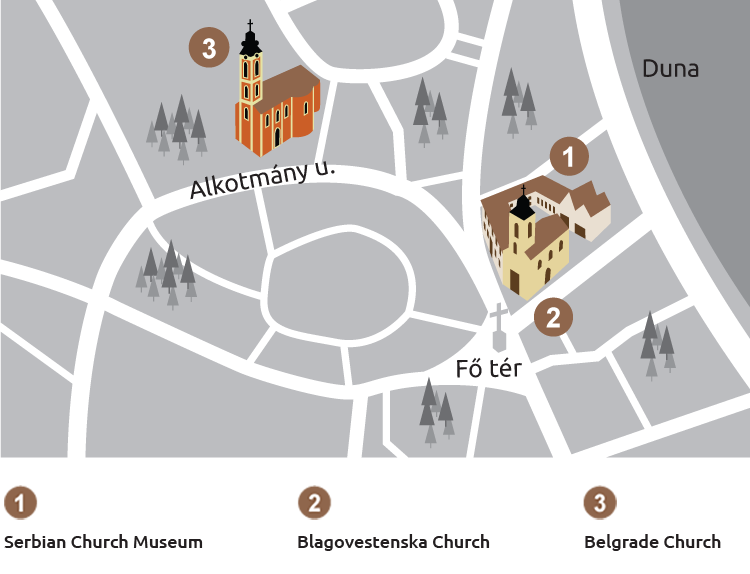Cathedral, Szentendre
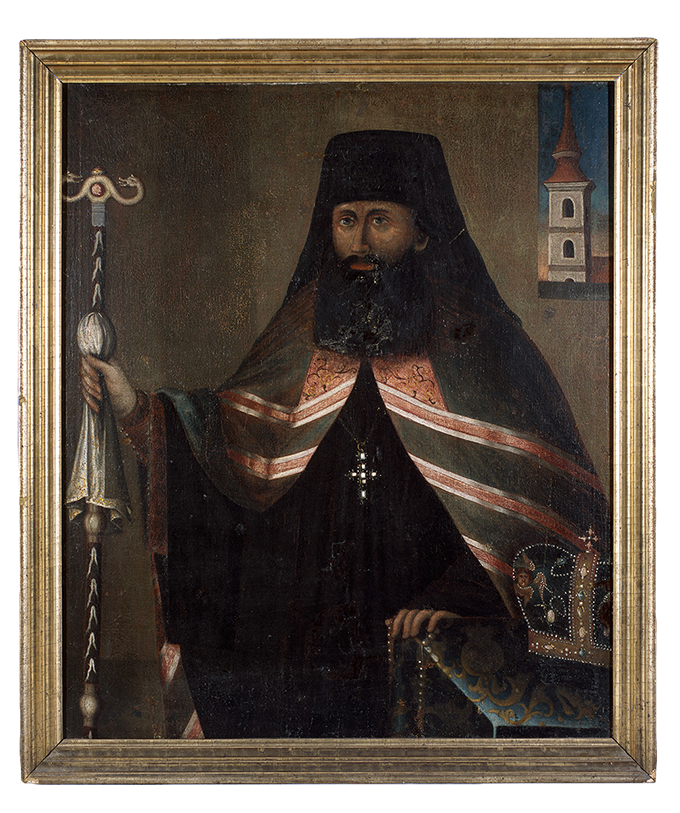
The Cathedral or the Church of the Dormition of the Theotokos is popularly known by the name ‘Belgrade Church’. One of Hungary’s largest Serbian Orthodox churches, it was named after people from Belgrade and its environs settling here following the 1690 Great Exodus of the Serbs. The present exterior of the Cathedral dates from the 18th century, and its history is a testament to the various transformations of Serbian art at the time.
At the site of the present building, the foundations of an older church built from solid materials (stone and bricks) are found, salvaged from several smaller Serbian churches in Szentendre in the late 17th and early 18th century. Constructed in the time of Patriarch Arsenije III Čarnojević, the original church was a simple steepleless structure with a three-sided apsis and nave, as well as a wooden belfry next to the church. Today, it may only be deduced from the small quantity of surviving plaster fragments that the church was supplied with murals as, at the time of the demolition of the old church and the building of the new one, most of the paintings were destroyed. In the early 1730s, multiple interventions were undertaken, when the old wooden belfry was replaced by a stone tower erected by the nave. The sight of this tower is documented by the depiction in Bishop Vasilije Dimitrijević’s portrait.
Parallel to the development of Szentendre as an economic and cultural centre, before the end of the first half of the 18th century, the construction of new churches from solid materials, informed by the baroque fashion of the period, began on the sites of earlier smaller wooden churches. Thus, during the episcopacy of Dionisije Novaković, the present church was built on the site of the original Cathedral by 1764, while the tall steeple next to the west façade was completed in 1777. Among the architectural arrangements of the new baroque church, the spacious semicircular cantors’ stalls, forming a regular three-foiled basis with the apsis of the sanctuary, hence reminiscent of the monasteries of Fruška Gora but, to some extent, also evocative of the old Serbian architecture of the Morava Region, are the most distinctive.
Thanks to the financial support offered by the founders and donators, the south and north façade of the nave were fitted with a richly decorated portal with stone carving. At the top of the entrance produced with the method of the mature baroque form, cartouches with the coat-of-arms of the Eparchy of Buda are highlighted. At this point, the front gate to the church is also to be noted: This exceptionally fine example of applied art was forged by Márton Ginesser, a Szentendre master. Near the gate, epitaphs are seen, with the ornately worked family crests of distinguished Szentendre families on many of them.
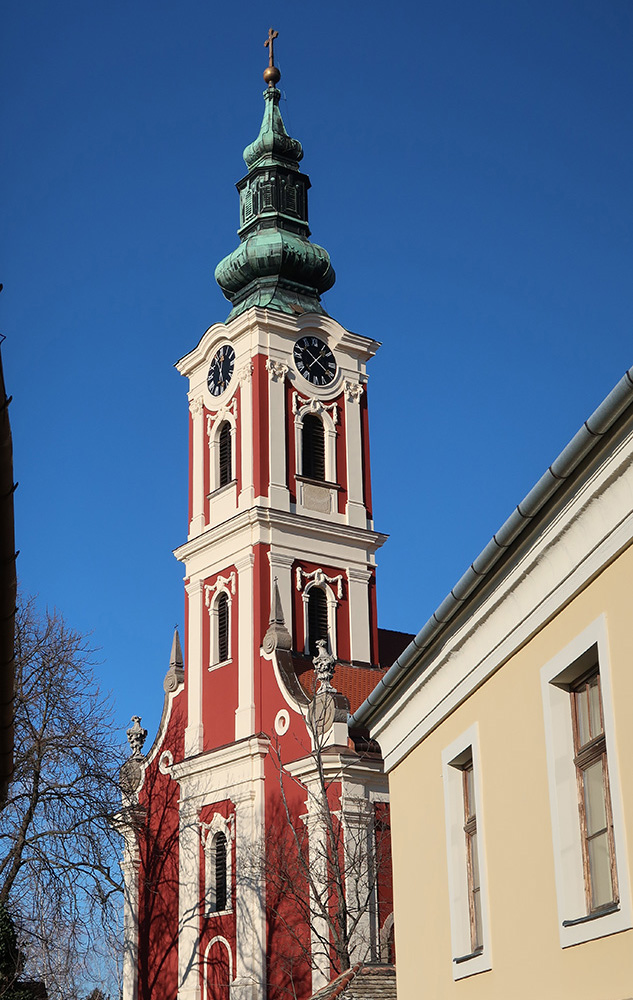
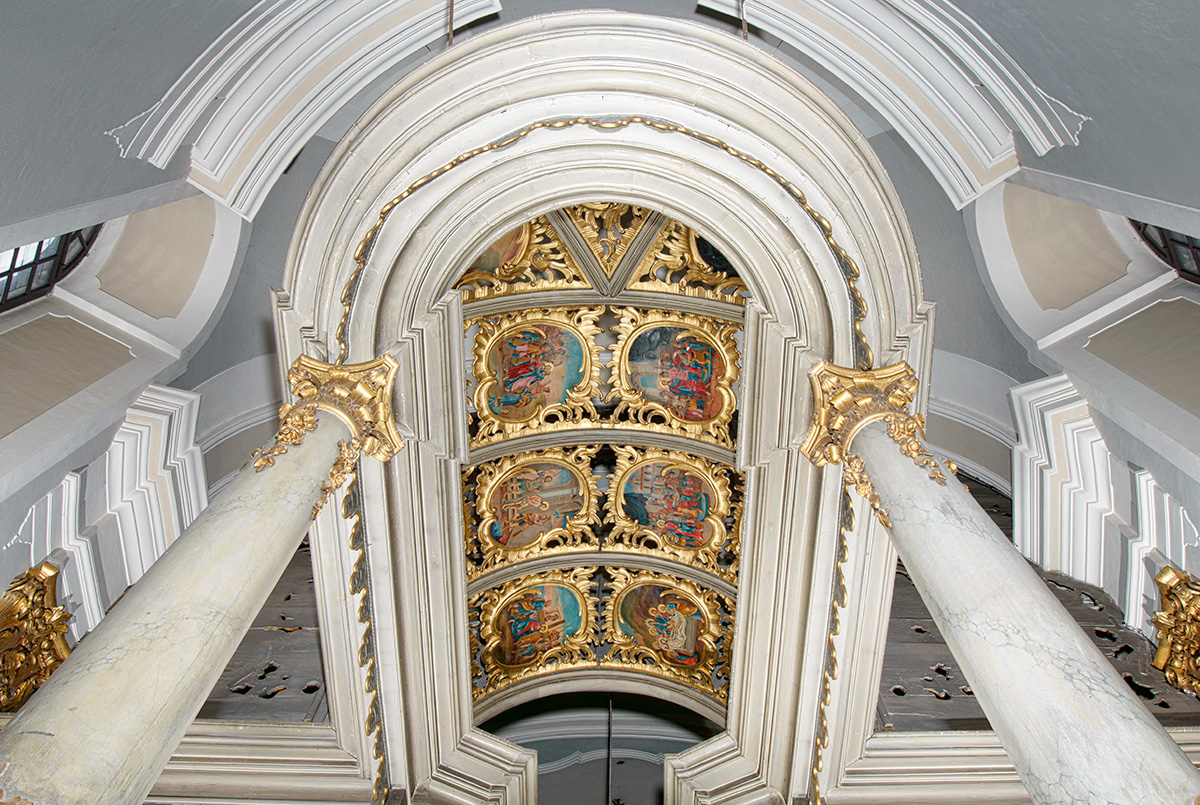
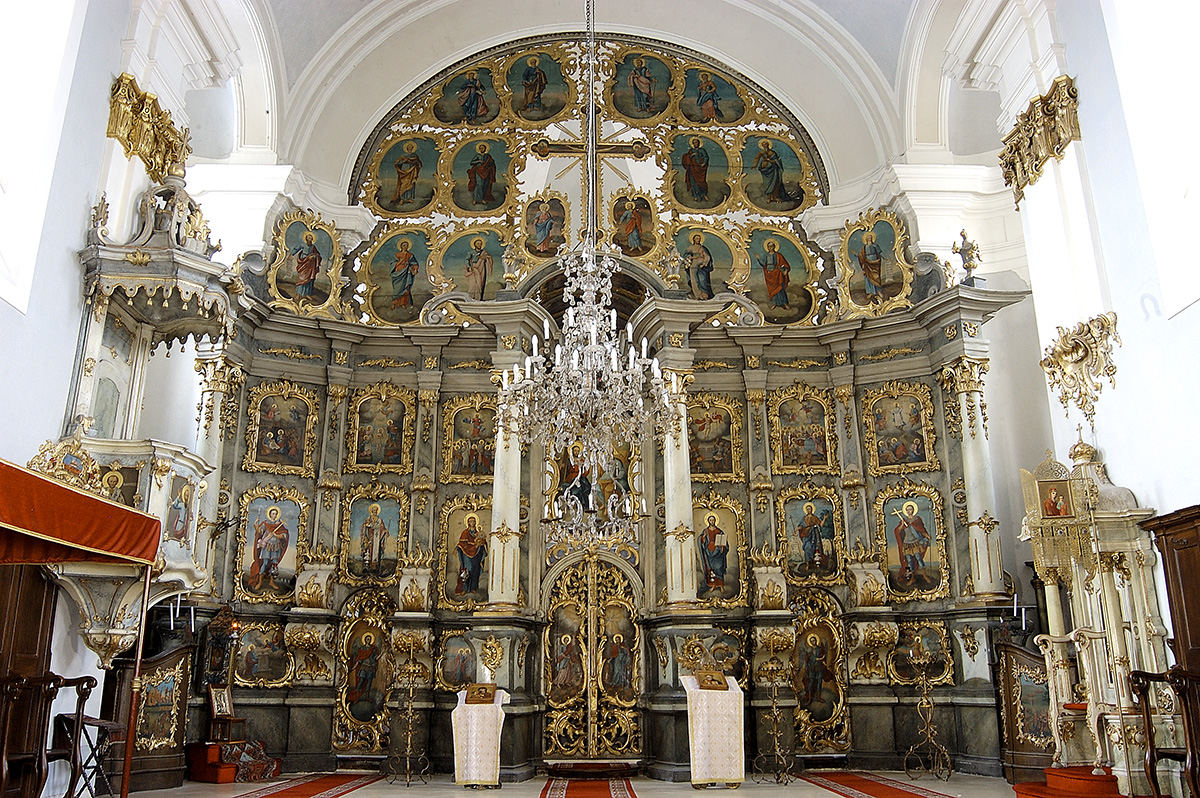
The interior of the church is dominated by a monumental iconostasis made by Antonije Mihić, a woodcarver from Pest, and Vasilije Ostojić, a painter from Novi Sad. Constructed from 1777 to 1781, the iconostasis reaches all the way to the vault structure of the church and is counted as one of the most highly developed Serbian baroque iconostases. A peculiarity of this iconostasis is the baldachin in the sanctuary, featuring the Passion of Jesus Christ. Icon painter Vasilije Ostojić was one of the most significant and productive Serbian baroque painters. His painting art evolved out of the symbiosis of eastern late-Byzantine and western baroque idioms. However, in the Szentendre iconostasis, which was his last work, it even approximates to certain rococo-type stylistic arrangements in the spirit of late-baroque eclecticism.
The designated graves of the hierarchs of the Eparchy of Buda – Bishops Vasilije Dimitrijević, Dionisije Novaković, Arsenije Stojković, Jeremija Mađarević and Georgije Zubković – are situated in the naos of the Cathedral of Szentendre.

